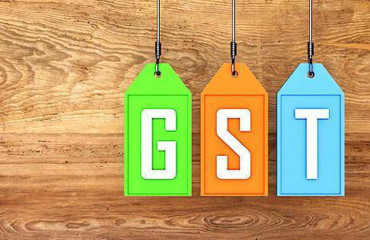
Every Friday, Plain Facts publishes a compilation of data-based insights, complete with easy-to-read charts, to help you delve deeper into the stories reported by Mint in the week gone by. The Centre’s goods and services tax (GST) collections grew 10.3% year-on-year to ₹1.65 trillion in December. Meanwhile, the recent attacks on vessels in the Red Sea have led to a surge in shipping costs.
Every Friday, Plain Facts publishes a compilation of data-based insights, complete with easy-to-read charts, to help you delve deeper into the stories reported by Mint in the week gone by. The Centre's goods and services tax (GST) collections grew 10.3% year-on-year to ₹1.65 trillion in December. Meanwhile, the recent attacks on vessels in the Red Sea have led to a surge in shipping costs.
Social spends
Welfare spending has become one of the selling points for political parties in recent election campaigns. A report released by the Reserve Bank of India (RBI) on states' finances last month showed that the total social sector spending by states is projected to increase 9.2% to ₹24 trillion in the current financial year. While the growth may seem small in a pre-election year, it comes on the back of a 28% rise in the previous year.
Loan surge
Buoyed by strong growth, India's outstanding retail loans crossed the milestone of ₹50 trillion for the first time in November 2023, Mint reported. The growth was fuelled by individual demand, proactive efforts from banks, and the merger of HDFC Bank with the former mortgage lender Housing Development Finance Corp. Ltd (HDFC). While retail loans jumped 30% year-on-year in November, the growth was 19% when adjusted for the merger. In comparison, loans to industry rose just 6.6%.
Overseas travel
25.3%: That's the year-on-year growth in international passenger traffic handled at airports in India between April and November, Mint reported. With this, international traffic has surpassed the growth rate of domestic traffic, which grew 17.9% during the period. While base effect played a role in pushing the growth, improved connectivity and relaxed visa norms were also key factors behind the trend. Expansion of IndiGo and airlines from the Air India group in international skies has also helped.
SUVs rule
Sports utility vehicles (SUVs) were a favoured choice for consumers in 2023, which helped in driving passenger vehicle (PV) sales beyond 4 million during the year, a Mint report said. This was despite the price of an average car rising by 9.5% since 2022. Over 2 million SUVs were sold last year. According to Shashank Srivastava, senior executive director at Maruti Suzuki, the average PV carried a price tag of ₹11.5 lakh in 2023, up from ₹10.5 lakh in the previous year.
Fintech loans
Amid the covid-19 pandemic, Indian fintech companies specializing in individual loans experienced significant growth, a trend that continued post-lockdowns, but profitability remained an ongoing challenge for them, an analysis by howindialives.com showed. While the fintech sector extended a total of ₹84,000 crore in consumption loans in 2022-23, they also faced a higher share of bad loans in consumer and personal segment than those of established lenders.
GST mop-up
₹1.65 trillion: That's the amount of GST collections for the month of December. While the GST mop-up was 10.3% higher than previous year, it was the lowest since October, when the collections were ₹1.72 trillion helped by festival demand. Barring May and August, GST receipts have remained above ₹1.6 trillion in all months this fiscal. The collections in the first 10 months grew 12%, which was in line with Budget estimates and shows a stable trend in consumption growth in the country.
Capex revival
A total of ₹2.1 trillion in new projects were announced across the country in October-December, recording a 15% increase from the previous three-month period, indicating a revival in the capital expenditure sentiment, showed data from the Centre for Monitoring Indian Economy. Capital expenditure proposals were led by private sector companies. Although capex proposals remained significantly below the figures reported in the same period of the previous year, there was a notable rebound after two consecutive quarters of steep decline.
